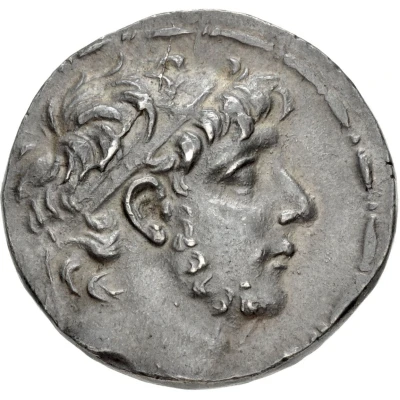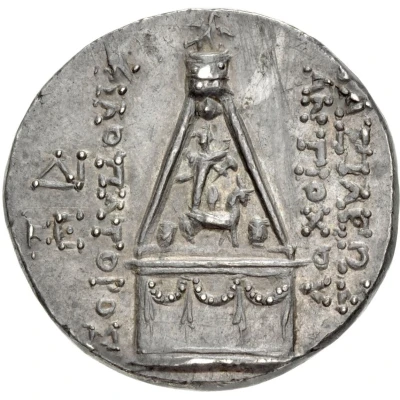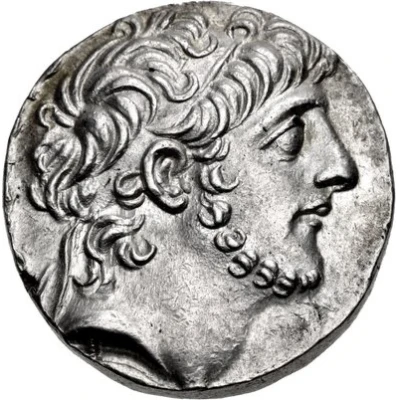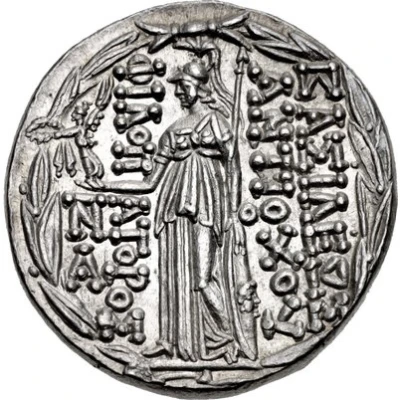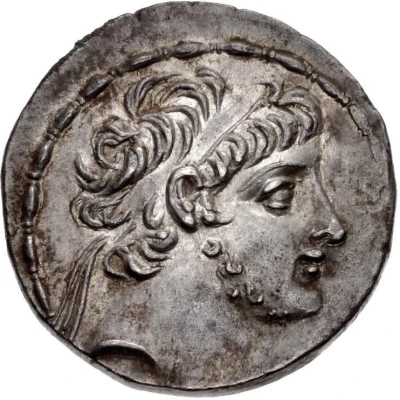
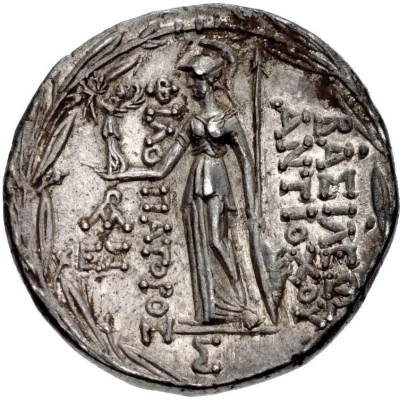

© Classical Numismatic Group, Inc.
Tetradrachm - Antiochos IX Kyzikeno Damacus 200-202 113 BC - 111 BC
| Silver | 16.2 g | 31 mm |
| Issuer | Seleucid Empire (Seleucid Empire (305 BC - 64 BC)) |
|---|---|
| King | Antiochos IX Kyzikenos (114 BC - 96 BC) |
| Type | Standard circulation coin |
| Years | 200-202 (113 BC - 111 BC) |
| Calendar | Seleucid era |
| Value | Tetradrachm (4) |
| Currency | Drachm |
| Composition | Silver |
| Weight | 16.2 g |
| Diameter | 31 mm |
| Shape | Round (irregular) |
| Technique | Hammered |
| Orientation | Variable alignment ↺ |
| Demonetized | Yes |
| Updated | 2024-10-10 |
| Numista | N#429484 |
|---|---|
| Rarity index | 100% |
Reverse
Athena Nikephoros standing left; monogram/control in outer left, date in exergue; all within wreath.
Script: Greek
Lettering: BAΣIΛEΩΣ ANTIOXOV ΦIΛO-ΠATOPOΣ
Translation: King Antiochos (IX, Kyzikenos) Philopator
Interesting fact
One interesting fact about this coin is that it features a unique blend of Greek and Persian influences in its design. The obverse side of the coin depicts the king's portrait, while the reverse side features the goddess Tyche, who was revered in both Greek and Persian cultures. This blending of cultural influences reflects the complex history of the Seleucid Empire, which was founded by a Greek general but eventually came to encompass a vast territory that stretched from the Mediterranean to the Indus River.
